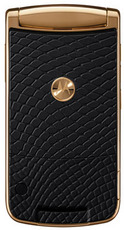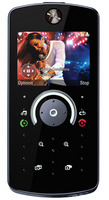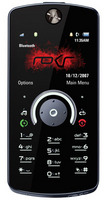Motorola responds to Nokia’s Trolltech buy
Jan 30, 2008 — by LinuxDevices Staff — from the LinuxDevices Archive — 2 views Motorola has responded to the news earlier this week that rival Nokia plans to purchase Trolltech, long-time supplier of the graphical development framework used in Motorola's Linux phones. In a nutshell, the response boils down to, “We were over Qt, anyway.”
Motorola has responded to the news earlier this week that rival Nokia plans to purchase Trolltech, long-time supplier of the graphical development framework used in Motorola's Linux phones. In a nutshell, the response boils down to, “We were over Qt, anyway.”
Christy Wyatt, who heads up Motorola's software platforms and ecosystems group, told LinuxDevices, “A year ago, we announced that we had founded LiMo [the Linux Mobile Foundation], along with five other companies, to collaborate on mobile Linux [story]. Since then, many other companies have joined. As part of its first specification, LiMo specifies GTK, and we intend to comply.”
Wyatt admitted that Motorola has no definitive “cut-over date” yet planned for switching from Qt to GTK. She said, “We did evaluate qt4. What we're using is an older version. Limo hasn't published that part of the framework yet, and there's really been no reason for us to rush ahead of the Foundation in moving to GTK.”
Wyatt said that in the near term, Motorola is working to document the places in its MotoDev tools where the Qt API is exposed. She said, “We're documenting them so developers will know when they're touching a part of the API that might go away.”
Asked about Motorola's dependence on Trolltech for development tools, or for other parts of Motorola's Linux phone stack, such as webkit integration, Wyatt said there was no reason for concern. “MotoDev Studio is in no way, shape, or form built around Qt tools,” she said, adding, “We did actually buy out a part of our license earlier. And our web UI framework, that's a Motorola implementation. We've had it working for a long time.”
Wyatt concluded, “In the mobile Linux space, Motorola believes in open standards and open source. We encourage Nokia and others to participate in the open development model [exemplified by] LiMo.”
Asked specifically if she thought Motorola's five-year long embrace of Linux had hurt or helped it, Wyatt laughed and replied, “It's hard to draw a direct connection between one program and a company the size of Motorola. Adopting Linux lets us participate in a thriving open source ecosystem. Linux is a long-term bet for any company. The investiment — our investment — is toward leveraging ecosystem, working with partners in the supply ecosystem. We're very happy with our Linux products.”
Motorola, Qt/embedded, and the shift toward desktop graphics on devices
Ever since first adopting Linux on Valentines Day, 2003, Motorola has used Qt/Embedded in its Linux phones starting with the A760. Qt/Embedded — later renamed Qt Core — is a subset of Trolltech's Qt cross-platform development framework, the graphics system and widget set used in Google Earth, the Opera browser, and the KDE desktop environment. As an embedded-specific version of Qt, Qt/Embedded aims to help developers build fast, lightweight applications for resource-constrained devices.
Qt/Embedded (or Qt/Core if you like) is one of a handful of embedded-specific GUI frameworks for Linux devices. Others include Mizi Prizm (used in Samsung phones), MiniGUI (used in PMPs), and Fluffy Spider FancyPants (used in some Qualcomm-based phones), to name a few.
Long popular in Linux PDAs such as Sharp's Zaurus, Qt/Embedded also underpins Trolltech's own Qtopia application stacks for PDAs, feature-phones, and VoIP phones. Among embedded GUI stacks, Qt/Embedded is probably the most popular, with several thousand applications available for it — many listed at the Handheld Linux Software Index. That said, the device market has been moving steadily away from embedded-specific graphics stacks over the past few years.
Ironically, Nokia arguably started the trend, by choosing to use GTK+, a desktop graphics library, in its groundbreaking Linux-based 770 Internet tablet. Ari Jaaksi, director of open source at Nokia, explained to LinuxDevices that the motivation was simply to choose the most widely used open source software, because it was also the most well-tested.
At the time, many early 770 testers missed the rich Qtopia PIM (personal information management) environments they'd grown used to on Linux PDAs. However, looking at the selection of applications available for today's Tablet OS2008 — Firefox, Flash 9, Skype, Rhapsody, Navicore, various media center stacks, and so on — it's hard to dispute the logic of “going desktop,” especially as the arrival of ARMv6- and beyond chips has made mobile devices the processing equals of last decade's laptops. And then, you have Isaiah and Menlow around the corner.
Motorola's most recent Linux implementation
 Razr2 V8 “Luxury Edition” (Click to enlarge) |
Motorola has shipped Linux-based phones into the U.S. market for about a year, starting with the MotoRokr Z6 (branded the MotoRizr Z6 in Asian markets). Prior to that, it shipped many millions of Linux-based phones in Asia and elsewhere. The Linux-based A1200, aka “Ming,” incorporating a business card scanner and touchscreen interface, reportedly accounted for a full percentage point of all phones sold in China in 2006, for example.
Motorola's highest-profile Linux phone to date is the Razr2 V8 model available through most U.S. GSM/GPRS providers. Also available in a fake snakeskin encased “Luxury Edition” priced northwards of $600, the Razr2 V8 is the first of Motorola's “iconic” mass market devices based on Linux, Wyatt noted.
Motorola's most recently announced Linux phone is incredibly futuristic, suggesting that Motorola's engineers can still deliver cutting-edge products, despite widely publicized financial difficulties for the company's Mobile Communications division. In place of hardware buttons, the Rokr E8 boasts “control surfaces” that re-configure themselves according to whether the device is being used as a music player, camera, or phone, with “haptics” causing the device to shiver each time a “virtual button” is pressed.






Motorola's Rokr E8
(Click any image to enlarge)
LinuxDevices caught up with Thao Tang, who directs Motorola's Linux-Java software development team, to find out what's inside the E8.
According to Tang, the E8's processor is an “SCMA11 from Freescale and ARM11 core with DSP-starcore.”
Freescale shares limited details about the SCMA11, but it appears to be a single-core baseband processor with a StarCore DSP. Thus, the E8 probably uses a separate ARM11-based application processor. Alternatively, the SCMA11 might be a multi-chip module integrating baseband, DSP, and an ARM11 core, perhaps in a sandwich with some memory. In addition to Linux, there's a separate RTOS — possibly VRTX — running on the baseband, Tang confirmed. The E8 has 128M NAND flash and 64M RAM.
The E8 uses a 2.6.10 Linux kernel supplied by long-time Motorola Linux provider MontaVista, Tang confirmed. He described the graphics framework as simply, “Qt.” There's also a Java virtual machine compliant with the forward-looking MIDP 3.0 spec.
Other interesting features noted by Tang include dynamic voltage and frequency scaling, and security checks during pre-boot hardware initialization.
In terms of development tools, Tang said that Motorola does not yet offer a kit for native Linux application development. However, he added, “We are actively working on the development of our native Linux toolset within our MOTODEV Studio integrated development environment. We are aiming for a release later this year.”
Tang added, “Developers can also use MotoDev Studio for Java ME to write Java applications for the E8.”
More details about Motorola's Linux phones can be found in our complete Linux phone showcase. Details about Nokia's planned merger with Trolltech are here. Recent stories about LiMo are here, here and here.
This article was originally published on LinuxDevices.com and has been donated to the open source community by QuinStreet Inc. Please visit LinuxToday.com for up-to-date news and articles about Linux and open source.